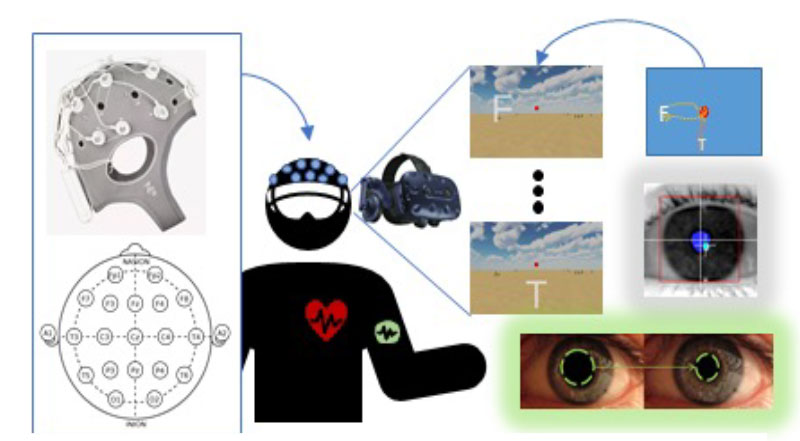Regulatory Science for Engineering Intuitive, Engaging, Safe and Effective Human-Device Interaction

Background: Traumatic brain injury (TBI) presents a significant challenge in civilian and military medicine with estimates that about 80% are mild TBI. Though current neurological examinations and imaging modalities are useful for the determination of moderate and severe TBIs, they have not demonstrated sensitivity to detect mTBI. TBIs, by nature, are heterogeneous and thus may be difficult to quantify using a single method. We hypothesize that a multi-modal sensor combined with a machine learning approach will lead to increased sensitivity in mTBI detection and monitoring.
Research Plan: In this project, we use a wearable system (Fig. 3) to collect synchronized neural and physiological data, namely EEG, pupillometry, eye-tracking, EMG, and heart-rate/HRV from mTBI patients and healthy subjects in a VR environment, and apply advanced signal processing and deep learning methods to the development of multi-modal physiological biomarkers. The REU student will be involved in all aspects of the research, including informed consent, data collection and analysis, and preparation of reports (e.g., conference presentations and publications).
Prerequisites: An introductory course in neuroscience and knowledge of signal processing and machine learning are desirable.